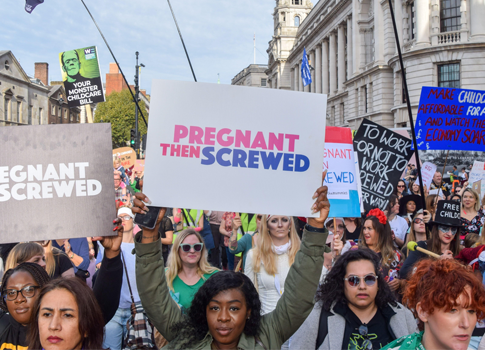The level of data produced by digital media campaigns is invaluable when it comes to tracking performance and adjusting for better results. This level of visibility, however, has also led to the rise of several industry-wide misconceptions about campaign effectiveness and strategy. Below we kick off our three part series by busting in detail two of these myths that frequently arise from the world of PPC.
PPC is our most efficient converting channel, so should it be upweighted?
Paid search is a demand-led channel. While we can grow pay per click (PPC) marketing activity by expanding keyword themes and broadening out both terms and match types, it will always be dependent on the level of demand.
Additionally, if we are at or close to capacity, increasing spend on PPC will mean lower cost efficiency and therefore higher CPCs. As a rule of thumb, this would constitute anything above 90% impression share for brand PPC and 70% for generic PPC. To grow volume on PPC in an effective way, it is best to invest in wider awareness of brand, product and category.
This drives audiences to actively search for these, increasing demand. As a result, this is the most effective way to target conversions when undertaking PPC marketing, not by increasing spend.
An ad isn’t showing when googling a keyword, is it live?
Long gone are the days when you could set a PPC ad live and be confident that it would appear for everyone searching it as long as your Average Position was high enough. This is because PPC has developed into an increasingly competitive and complex media to buy.
With the number of advertisers bidding on any one term rising exponentially, Google has brought in measures to ensure placements are evenly distributed. When a user searches for a particular keyword, the bid is then entered into an auction. This takes several factors into account to determine whether to show an advertiser’s ad or not, each of which is crucial when considering effective PPC management. We break them down below:
Impression Share:
There are two strands to Impression Share that could limit delivery of an ad on a particular keyword – Impression Share lost to budget and Impression Share lost to rank.
When advertiser’s budgets are limited, or their Ad Rank is low, Google will only show for a percentage of searches, the result of which is Impression Share.
If Impression Share lost to rank is high, the advertiser should work on their Quality Score to reduce this, which is made up of Ad Relevance, Landing Page Experience and Expected CTR.
If Impression Share lost to Budget is high, the advertiser should increase the budget, or refine the keyword portfolio to be more appropriate to their budget (or be happy serving for a smaller percentage of searches on the term in question). It is unlikely that you will ever achieve 100% Impression Share when using an automated strategy (aside from Target Impression Share) as there will always be a segment of searches that Google deems not appropriate for your designated strategy.
Smart bidding:
During the auction process, these strategies take into account a range of user attributes before determining whether to bid for the slot or not. The purpose of this is to only display for users that the algorithm believes will complete the desired action of the strategy, such as in a Maximise Clicks strategy only showing for users it believes will click the ad.
This is a key factor in this myth. Google uses cookie data to understand whether a user has visited a website recently or regularly, and will deem this an unnecessary auction to bid in (unless you are using an RLSA strategy to specifically target users who have previously been on your website), or if they search for keywords often and don’t click. As a result, Google will consider this a low quality search and will pull out of this auction.
So, the conclusion here is that while we might think googling a term that’s being bid for automatically means it will appear in our SERPs, ultimately this might not align with the strategy in place. And most importantly, it does not mean that the ad is not live.
Looking at the bigger picture
That concludes this round of digital marketing mythbusting. The common theme among the misconceptions we’ve addressed is to never look at data from campaigns or channels in isolation. Drawing conclusions based on this fails to account for the wider world in which marketing activities operate, meaning we can only ever truly make adjustments or measure efficacy by looking at the bigger picture.
In part two, we’ll take a look at another series of digital media myths, helping to put to bed some of the most common misconceptions we see.






